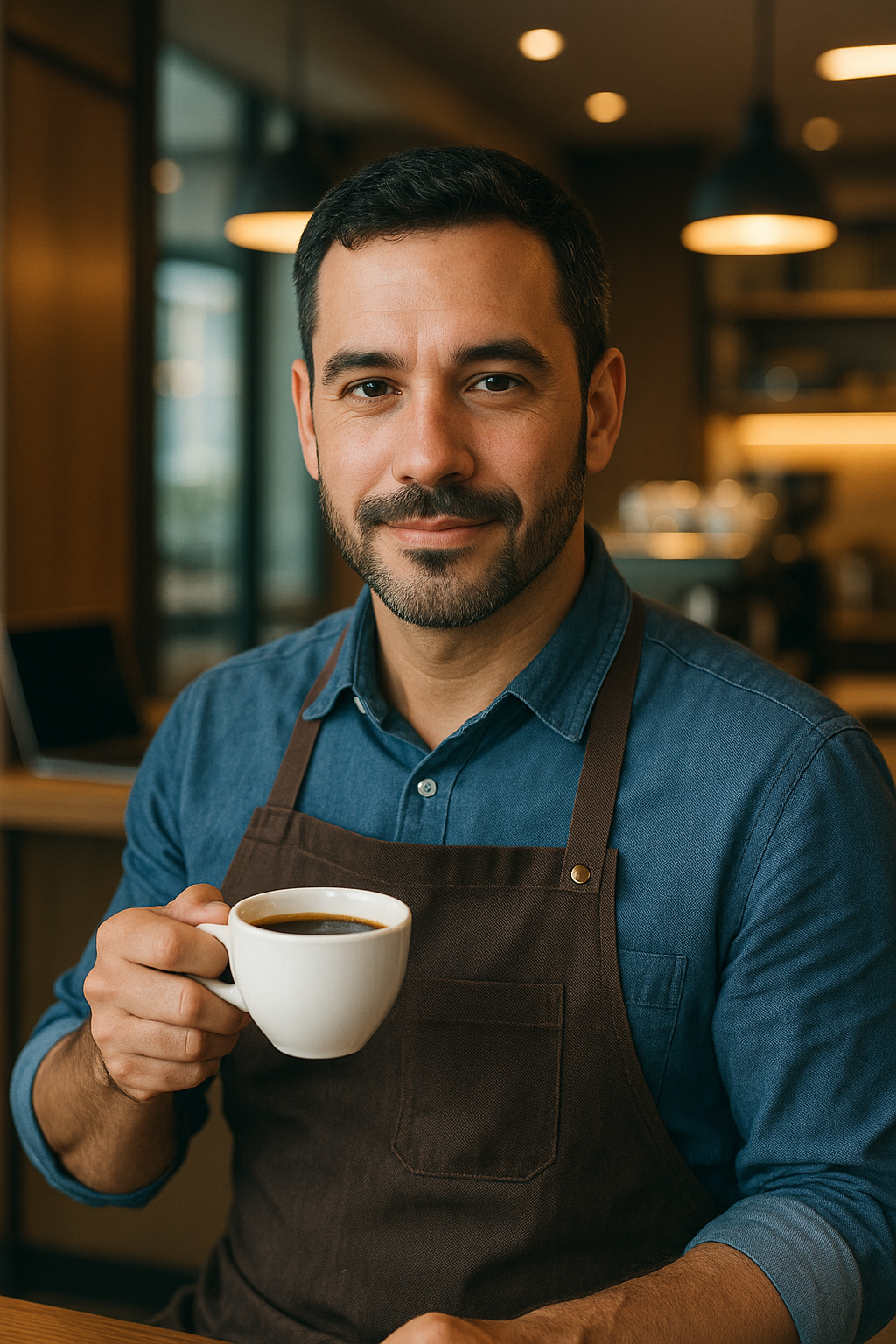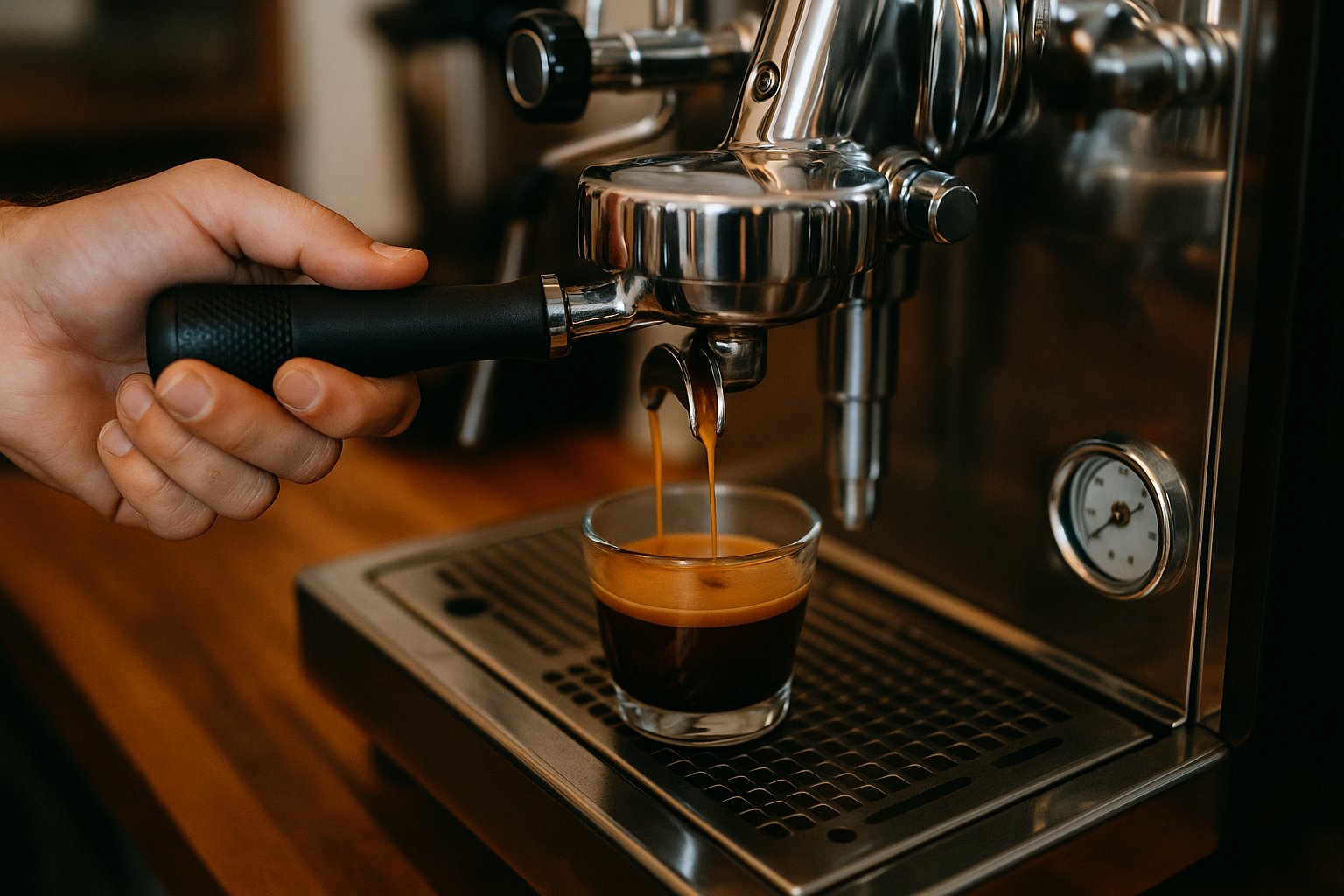Espresso is more than just a drink—it’s a discipline, a ritual, and for many, a passion. To the untrained eye, it may seem simple: a small amount of coffee brewed quickly under pressure.
But to baristas and coffee aficionados, the espresso shot is a work of precision and expression. In the world of specialty coffee, mastering the espresso is one of the most essential and respected skills.
Whether you’re aiming to become a professional barista or simply want to improve your home brewing, this guide will walk you through the intricate world of espresso-making, from the science behind the extraction to the artistry of perfecting your technique.
What Is Espresso, Really?
Espresso isn’t a type of coffee bean or a roast—it’s a brewing method.
Originating in Italy in the early 1900s, espresso involves forcing hot water through finely ground coffee under high pressure, typically around 9 bars. The result is a dense, rich, and flavorful shot of coffee with a layer of crema on top.
Unlike other brewing methods, espresso is both fast and concentrated. A standard shot, called a “single,” contains about 25 to 30 ml of coffee and is brewed in about 25 to 30 seconds.
Most specialty cafés use a double shot (about 50 to 60 ml) as their standard.
What makes espresso complex isn’t just the pressure or the grind—it’s the precision. Every element matters: the dose, the grind size, the tamp, the temperature, the water quality, the timing, and even the freshness of the beans.
The Three Pillars: Dose, Yield, and Time
At the heart of every espresso recipe are three variables:
Dose: The amount of ground coffee used (usually 18–20g for a double shot)
Yield: The amount of liquid espresso extracted (typically 36–40g)
Time: How long the water takes to pass through the coffee (usually 25–30 seconds)
A well-balanced shot will have a pleasant acidity, sweetness, and a touch of bitterness. It should feel smooth and full-bodied, not watery or harsh. If one variable changes, the others must adjust accordingly to maintain the balance.
Grinding for Espresso
Grind size is arguably the most important variable in espresso preparation. The ideal grind for espresso is very fine—finer than table salt but not powdery like flour.
If the grind is too coarse, water passes through too quickly, under-extracting the coffee and leaving it sour and weak. If the grind is too fine, the water struggles to pass through, leading to over-extraction and bitterness.
You’ll need a burr grinder for consistency—blade grinders won’t cut it. Espresso grinders offer micro-adjustments so you can dial in your shots precisely.
Adjust your grind often. Changes in humidity, temperature, and bean freshness can affect how coffee extracts. A good rule of thumb: if your shot runs too fast, grind finer; if it runs too slow, grind coarser.
The Importance of Tamping
Tamping is the act of compressing the coffee grounds in the portafilter to create resistance for the pressurized water.
A proper tamp is even and firm, using about 30 pounds of pressure. The goal is to produce a level bed of coffee that water can flow through uniformly.
Uneven tamping or poor distribution can cause channeling—when water finds the path of least resistance through the puck, leading to weak or uneven flavors.
Use a leveler or a distribution tool if needed, and always make sure the puck is flat and even before inserting it into the group head.
Water Temperature and Pressure
Most espresso machines brew at around 90–96°C (194–205°F). Water that is too hot can over-extract the coffee, making it bitter; too cool and the coffee will be under-extracted and sour.
Pressure should be around 9 bars. High-end machines offer pressure profiling—where you can control the pressure at different stages of extraction—but for most baristas, maintaining consistent 9-bar pressure is the goal.
Using filtered water is critical. Hard water with too many minerals can damage machines and alter flavor. Soft or distilled water, on the other hand, may not extract coffee properly.
Aim for water with balanced mineral content—about 150 ppm of total dissolved solids is ideal.
Shot Timing and Visual Cues
Watch the espresso flow. A good shot starts with slow, syrupy drips that evolve into a steady, mouse-tail-like stream. The flow should start after about 5–8 seconds of pre-infusion and finish around the 25–30 second mark.
Too fast? You may need a finer grind or a heavier dose.
Too slow? Try a coarser grind or lighter tamp.
The crema should be golden brown with a tiger-stripe pattern. If it’s too light or dissipates quickly, the shot might be under-extracted. If it’s too dark or foamy, it could be over-extracted.
Dialing In: Tasting and Adjusting
Dialing in means making adjustments to achieve the perfect espresso shot. This process should be repeated daily or whenever you change beans.
Start with a base recipe—say, 18g in, 36g out in 28 seconds. Taste the shot. Ask yourself:
- Is it too sour or sharp? It might be under-extracted. Try a finer grind or longer time.
- Is it too bitter or dry? It could be over-extracted. Try a coarser grind or shorter time.
- Is it weak or bland? You may need to increase your dose or check your tamping.
Keep a log of your recipes and results. Small changes can make a big difference.
Bean Selection and Roast Level
The beans you choose will greatly influence the flavor profile of your espresso. Single-origin beans offer unique, complex flavors, while blends are crafted for balance and consistency.
Lighter roasts tend to be more acidic and floral, but also harder to extract. Darker roasts are easier to work with but can become overly bitter if over-extracted. For beginners, medium roasts are a good starting point.
Freshness also matters. Coffee should rest 5–10 days after roasting before use and should be consumed within 3–4 weeks for best results.
Cleaning and Maintenance
A dirty machine makes bad coffee. Oils and residues from previous shots can affect flavor and machine function. Backflush your machine daily, clean the portafilter and basket after each use, and descale the machine regularly based on usage and water hardness.
Don’t forget the grinder. Coffee oils can go rancid and alter taste. Clean the burrs weekly or biweekly depending on volume.
Espresso Beyond the Basics
Once you’ve mastered the fundamentals, there’s always more to explore: pressure profiling, pre-infusion techniques, water mineralization, and even modifying brew ratios for different flavor expressions.
Experimenting is key to growth. Try tasting the same coffee at different extraction levels. Practice blind cupping sessions. Challenge yourself to dial in quickly under pressure.
Why This Skill Matters
Being able to pull a consistently excellent espresso shot is a sign of a skilled barista. It’s also essential if you want to work in a café or start your own.
A poorly extracted espresso can ruin a latte or cappuccino, no matter how good your milk frothing is.
In the specialty coffee industry, customers expect quality—and they can taste the difference.
Final Thoughts on Mastering the Espresso Shot
Espresso-making is part science, part art, and part repetition. It’s about attention to detail, consistency, and understanding how each variable influences the final cup. Whether you’re crafting shots at home or in a busy coffee shop, mastering espresso is one of the most rewarding skills a barista can achieve.
And the beauty of it is: there’s always more to learn, more to taste, more to refine. Every great shot brings you closer to true mastery.

Marcelo Oliveira is a coffee enthusiast and content creator specializing in barista skills, brewing methods, equipment reviews, coffee-related health insights, and fascinating curiosities from the coffee world. With a deep passion for every step of the brewing process, he turns technical knowledge into accessible and engaging content for both beginners and seasoned coffee lovers. Marcelo’s goal is to help readers appreciate the full experience of coffee—from bean to cup.
